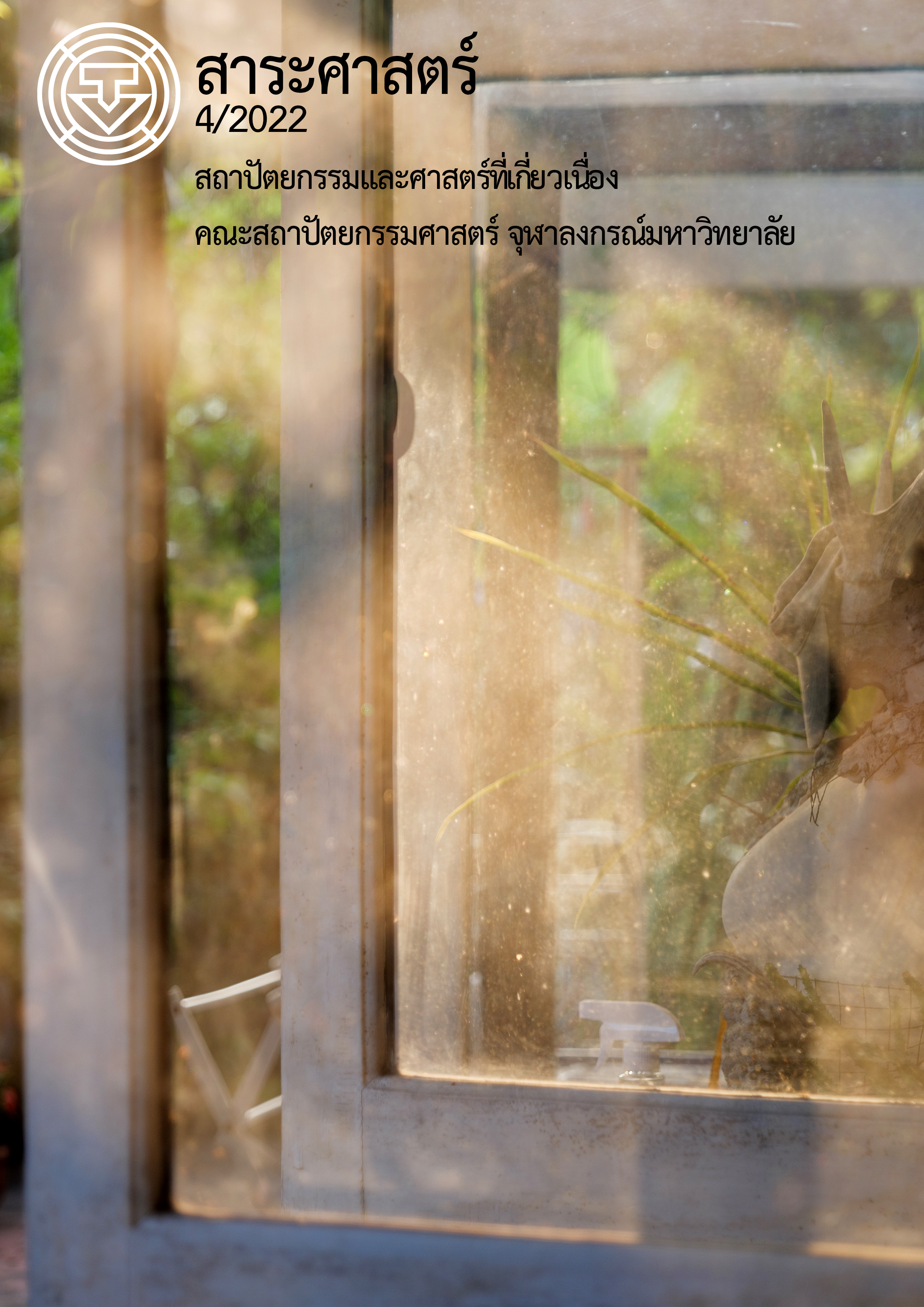Spatial Logic of Dependency of Thai-Mon Communities in Sangkhlaburi, Kanchanaburi Province
Main Article Content
Abstract
This article is a phenomena explanation of spatial dependency in Thai-Mon Sangkhlaburi communities which compose of Mon, Thai, and Karen ethnic community area. The community group area is divided by topography into two parts: the Thai community and the Mon community. The community group can exist by accessing the activity area in the center of the Thai community. emerged as a phenomenon of spatial dependence for existence Therefore, it came to study the structure of the community group from the changing of spatial configuration, which is an important mechanism causing the above phenomenon. The purpose of this research is for spatial logic of dependency phenomena explanation by using 3 methods. First, Figure and ground Mapping analysis. Second, Overlay Mapping analysis. Third, using communities' circulation network spatial model for accessibility analysis. From the literature review, Thai, Mon, and Karen community area are standing under spatial dependency conditions. Each community area has to rely on circulation that can connect their community and the live center in the Thai community. Spatial characteristics of the live center area are complex land and building used area, high density of roaming, compact circulation network system and road network system should connect and access any activity space thoroughly that are consistent with the "Live Center" definition be Hillier (1999). The live center of communities on a global and local scale can be different areas and it can relocate over time but will exist in any community area for keeping the spatial dependency state in communities. The results of this study can be used as information for the formulation of policies, measures for appropriate development and conservation of community areas, and academic information in urban planning that is useful for the agencies involved in creating maps for the development of urban and local areas both at present and in the future.
Article Details
References
ไขศรี ภักดิ์สุขเจริญ. (2547). วาทกรรมของเมืองผ่านโครงสร้างเชิงสัณฐาน. วารสารวิชาการคณะสถาปัตยกรรมศาสตร์, 2, 63-76.
ไขศรี ภักดิ์สุขเจริญ. (2554). เอกสารคำสอนรายวิชา 2503690 Urban Morphology. กรุงเทพฯ: โรงพิมพ์จุฬาลงกรณ์มหาวิทยาลัย.
ณัฐพงค์ แย้มเจริญ. (2557). จากสะพานอุตตามนุสรณ์ถึงสะพานไม้ไผ่ลูกบวบ : ภาพสะท้อนวิถีชีวิตชุมชนไทย-มอญสองฝั่งแม่นํ้าซองกาเลียที่เปลี่ยนแปลง. วารสารเกษมบัณฑิต, 15, 10-13.
ที่ว่าการอำเภอสังขละบุรี. (2561). Bird Eye View บรรยากาศอำเภอสังขละบุรี [Video]. สืบค้นจาก https://www.facebook.com/watch/?v=2132537746979047
สนธยา พลศรี. (2547). ทฤษฎีและหลักการพัฒนาชุมชน (พิมพ์ครั้งที่ 5). กรุงเทพฯ: โอเดียนสโตร์.
อรวรรณ ทับสกุล. (2546). หลวงพ่ออุตตมะ : ผู้นำทางวัฒนธรรมกับการเปลี่ยนแปลงทางสังคมและวัฒนธรรมของหมู่บ้านมอญพลัดถิ่นสังขละบุรี. (วิทยานิพนธ์มหาบัณฑิต, มหาวิทยาลัยศิลปากร).
อภิรดี เกษมศุข. (2561). สเปซซินแท็กซ์ หนึ่งการศึกษาสัญฐานวิทยา. กรุงเทพฯ: เมจิค พับบลิเคชั่น.
Hillier, B. (1996). Space is the machine: A configurational theory of architecture. London: Space Syntax.
Hillier, B. (1999). Centrality as a process: Accounting for attraction inequalities in deformed grids. Urban Design International, 4(3-4), 107-127.
Hillier, B., & Hanson, J. (1984). The social logic of space. Cambridge: Cambridge University Press.
Hillier, B., Penn, A., Hanson, J., & Grajewski, T. (1993). Natural movement: Or, configuration and attraction in urban pedestrian movement. Environment and Planning B: Planning and Design, 20(1), 29-66.


